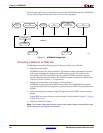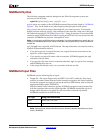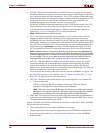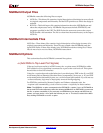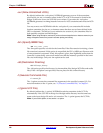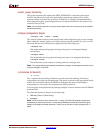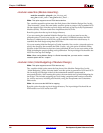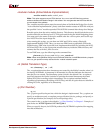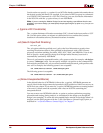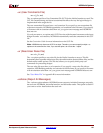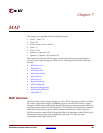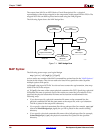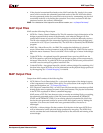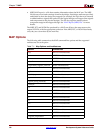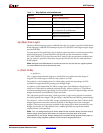
126 www.xilinx.com Development System Reference Guide
Chapter 6: NGDBuild
R
You do not have to specify a –p option if your NGO file already contains information about
the desired vendor and family (for example, if you placed a PART property in a schematic
or a CONFIG PART statement in a UCF file). However, you can override the information
in the NGO file with the –p option when you run NGDBuild.
Note:
If you are running the Modular Design flow and are targeting a part different from the one
specified in your source design, you must specify the part type using the -p option every time you run
NGDBuild.
–r (Ignore LOC Constraints)
The –r option eliminates all location constraints (LOC=) found in the input netlist or UCF
file. Use this option when you migrate to a different device or architecture, because
locations in one architecture may not match locations in another.
–sd (Search Specified Directory)
–sd search_path
The –sd option adds the specified search_path to the list of directories to search when
resolving file references (that is, files specified in the schematic with a FILE=filename
property) and when searching for netlist, NGO, NGC, NMC, and MEM files. You do not
have to specify a search path for the top-level design netlist directory, because it is
automatically searched by NGDBuild.
The search_path must be separated from the –sd by spaces or tabs (for example, –sd designs
is correct, –sddesigns is not). You can specify multiple –sd options on the command line.
Each must be preceded with –sd; you cannot combine multiple search_path specifiers after
one –sd. For example, the following syntax is not acceptable.
–sd /home/macros/counter /home/designs/pal2
The following syntax is acceptable.
–sd /home/macros/counter –sd /home/designs/pal2
–u (Allow Unexpanded Blocks)
In the default behavior of NGDBuild (without the –u option), NGDBuild generates an
error if a block in the design cannot be expanded to NGD primitives. If this error occurs, an
NGD file is not written. If you enter the –u option, NGDBuild generates a warning instead
of an error if a block cannot be expanded, and writes an NGD file containing the
unexpanded block.
You may want to run NGDBuild with the –u option to perform preliminary mapping,
placement and routing, timing analysis, or simulation on the design even though the
design is not complete. To ensure the unexpanded blocks remains in the design when it is
mapped, run the MAP program with the –u (Do Not Remove Unused Logic) option, as
described in “–u (Do Not Remove Unused Logic)” in Chapter 7.



